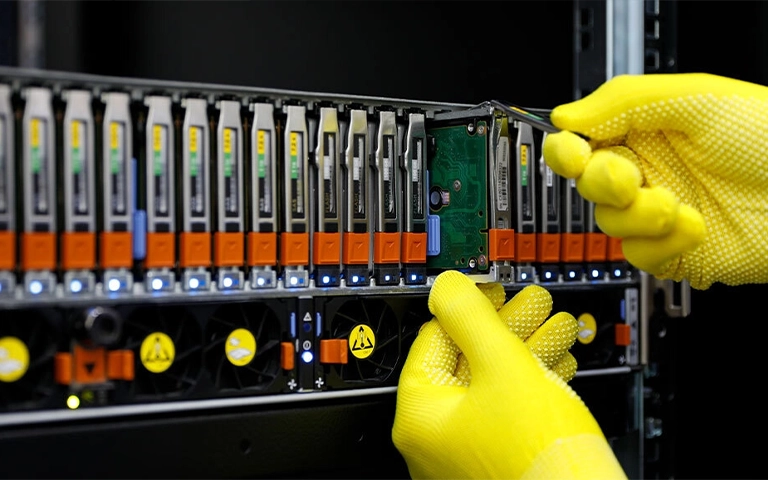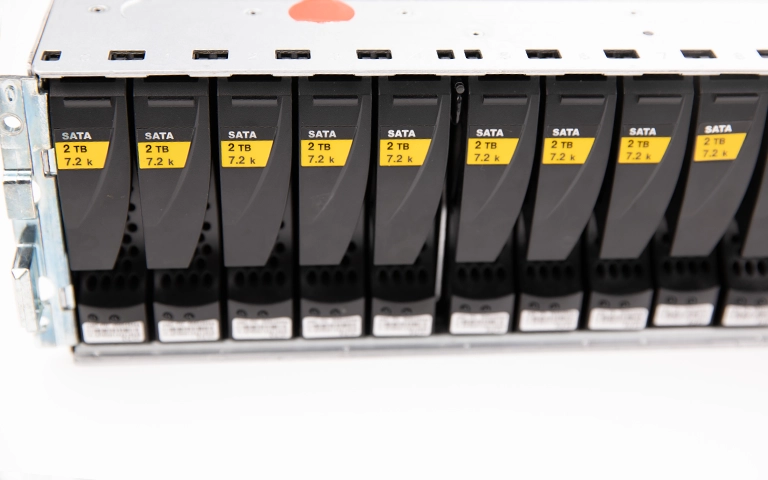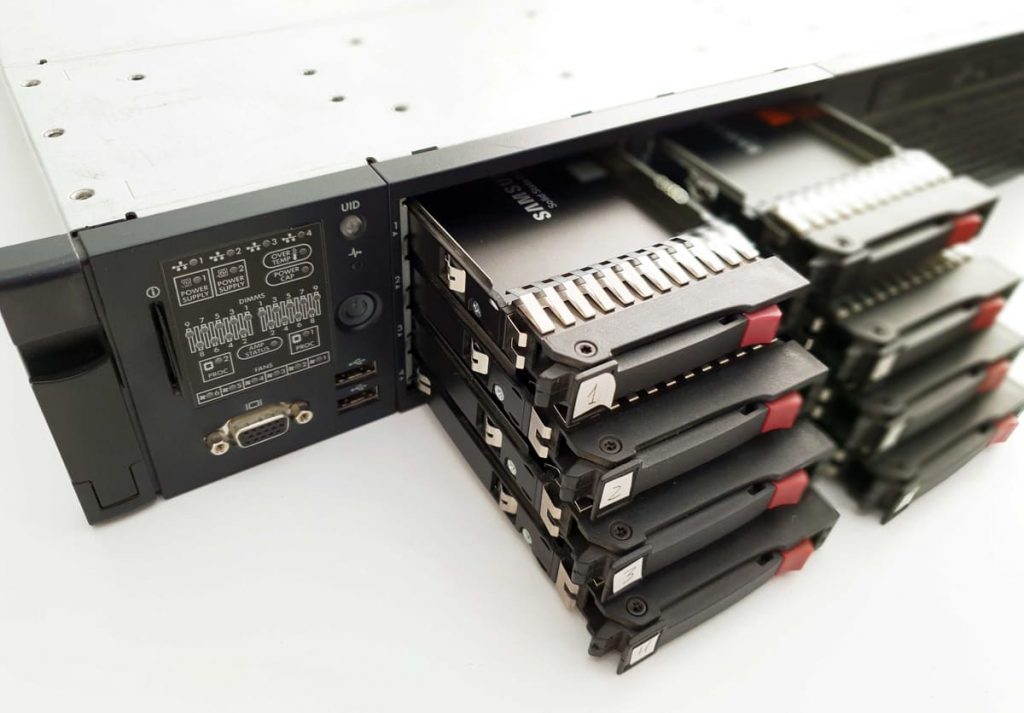Storage demands continue to grow, and with them comes the need for both capacity and reliability. Traditional RAID systems have long been a foundation for protecting data, but ZFS introduced a new approach with RAID-Z. This method offers strong redundancy, better protection against corruption, and more efficient use of disks.
In this blog, you’ll learn how RAID-Z works, the differences between its levels, the advantages and trade-offs, and what to do when failures occur.
If you ever face RAID-Z data loss, RAID Recovery Services is here to help you recover your critical files safely.

How RAID-Z Works
RAID-Z is part of the ZFS file system, designed to prevent silent data corruption and ensure reliable storage. At its core, RAID-Z uses a parity-based system similar to RAID 5 and RAID 6 but with enhancements. Unlike fixed stripe sizes, RAID-Z uses dynamic striping, which eliminates the “write hole” problem that can affect traditional RAID arrays.
In practice, data is split across multiple drives, with parity information stored alongside. If one or more drives fail (depending on the RAID-Z level), the missing data can be rebuilt from the parity. This makes RAID-Z particularly valuable for large storage pools where data integrity is critical.
Unlike standard RAID, RAID-Z integrates closely with ZFS features such as copy-on-write, checksumming, and scrubbing. These safeguards ensure that corruption is detected and corrected before it causes data loss.
RAID-Z Levels: Z1, Z2, and Z3
RAID-Z comes in three levels, each offering a different balance between capacity, performance, and fault tolerance. Choosing the right level depends on your storage needs and how much risk you’re willing to accept.
RAID-Z1
Provides single-parity protection, allowing one disk in the array to fail without data loss. It offers better efficiency than mirrors and suits smaller pools. However, with today’s high-capacity drives, RAID-Z1 carries greater risk: if another disk fails during a rebuild, all data may be lost.
RAID-Z2
The most widely recommended level. Dual parity allows two disks to fail simultaneously. This balance of redundancy and usable capacity makes it a strong choice for medium to large storage pools, where drive failures during rebuilds are more likely.
RAID-Z3
Offers triple-parity protection, allowing up to three disks to fail without data loss. This is particularly valuable in very large arrays, where rebuilds take longer and the chance of multiple failures is higher. The trade-off is reduced usable capacity compared to Z1 or Z2.

Benefits of Choosing RAID-Z
RAID-Z is popular not only for its redundancy but also for the protections it offers through ZFS. Key benefits include:
Data integrity – Built-in checksums detect and correct silent corruption, which many traditional RAID systems cannot manage.
Efficient storage – Dynamic striping avoids wasted space caused by fixed stripe sizes.
Flexible redundancy – Options from Z1 to Z3 allow you to align protection levels with risk tolerance.
Simplified management – Integration with ZFS tools for scrubbing, monitoring, and self-healing reduces admin effort.
Scalability – Designed for large disks and datasets, making it suitable for both home labs and enterprise use.
These benefits make RAID-Z attractive for anyone who values both performance and data protection. However, understanding its trade-offs is just as important before relying on it as your primary storage solution.
Limitations You Should Consider
Despite its strengths, RAID-Z has some important limitations:
Rebuild times – Larger drives take longer to rebuild, especially in RAID-Z1, increasing failure risk.
Performance trade-offs – Strong for sequential workloads but slower than striped mirrors in random writes.
Expansion challenges – Adding drives requires creating a new vdev rather than extending the existing one.
Complexity – ZFS has a learning curve and requires administrators to be familiar with its tools.
Not a backup substitute – RAID-Z guards against drive failures but not accidental deletions, malware, or corruption written across all disks.
These trade-offs highlight why RAID-Z should be part of a broader data protection strategy, not the only safeguard for your files.

When RAID-Z Systems Fail
Even with multiple layers of protection, RAID-Z systems can still experience failures that put data at risk. Some common scenarios include:
Multiple disk failures: If more drives fail than the level of parity allows (e.g., two in RAID-Z1), the pool becomes unreadable.
File system corruption: ZFS corruption, although rare, can spread across the pool and make recovery complex.
Hardware issues: Controller malfunctions, bad cables, or power problems can damage disks or disrupt the array.
Human error: Misconfigured pools, mistaken reformatting, or overwriting parity can all cause data loss.
DIY recovery attempts can worsen damage by corrupting parity or metadata. This is where professional help is essential. At RAID Recovery Services, we specialise in RAID-Z and other complex storage arrays, using proven recovery methods.
At RAID Recovery Services, we specialize in handling RAID-Z and other complex storage arrays with proven recovery methods. Learn more about our RAID Data Recovery Services.
Fast turnaround times for business-critical data
Recovering Data from RAID-Z
Recovering data from a failed RAID-Z system requires specialist knowledge of both ZFS and parity structures. Unlike traditional RAID, RAID-Z pools rely on complex metadata and checksums, which must be reconstructed with precision to restore files.
Professional recovery usually involves:
Diagnosis: Identifying the type of failure, whether hardware, software, or corruption-related.
Disk imaging: Creating sector-by-sector copies of each drive to safeguard the originals.
Parity reconstruction: Rebuilding missing or corrupted data using ZFS parity algorithms.
File system repair: Restoring ZFS structures to make data accessible once more.
At RAID Recovery Services, we follow this process in a controlled environment, ensuring your data is managed securely. Our engineers have extensive experience with RAID-Z1, Z2, and Z3 arrays, giving you the strongest possible chance of data recovery without further risk.
If your RAID-Z system has failed, swift action improves the likelihood of success. Avoid rebuilding or reinitialising the array on your own—these steps can overwrite the very data you need recovered.

Keeping Your RAID-Z Setup Reliable
RAID-Z provides robust protection, but maintaining system health requires continuous attention. A few best practices can significantly improve reliability:
Run regular scrubs: ZFS scrubbing detects and repairs silent corruption before it escalates.
Monitor drive health: Use SMART monitoring to identify failing drives at an early stage.
Select proper pool widths: Follow ZFS guidance for vdev sizing to prevent performance bottlenecks.
Invest in quality hardware: Dependable controllers, power supplies, and cabling reduce the risk of hardware-related failures.
Maintain backups: Even with RAID-Z, a separate backup remains the best safeguard against accidental deletion, ransomware, or catastrophic loss.
Test recovery plans: Periodically confirm that backups can be restored and that redundancy is functioning as expected.
By combining RAID-Z with proactive maintenance and robust backup policies, you minimise the risk of downtime and data loss.
Conclusion
RAID-Z is a powerful feature within ZFS that delivers both data protection and efficient storage usage. By understanding how it operates, the distinctions between RAID-Z1, Z2, and Z3, and its advantages and limitations, you can make more informed decisions for your storage environment.
Nevertheless, RAID-Z is not immune to failure. Multiple drive issues, corruption, or human error can still result in serious data loss. Should this occur, avoid risky DIY attempts.
Contact RAID Recovery Services for professional support. Our team specialises in RAID-Z recovery and can guide you safely through the process.
With the correct setup, regular maintenance, and a robust backup strategy, RAID-Z can provide reliable performance and long-term protection for your most critical data.
If your RAID-Z array fails, request immediate help through our Emergency Service Options

Trust the experts with proven results
Frequently Asked Questions
Is RAID-Z better than traditional RAID 5 or RAID 6?
RAID-Z offers stronger data integrity than RAID 5 or 6 by eliminating the write-hole issue and incorporating checksums. This makes it more dependable for high-capacity drives.
Can I expand a RAID-Z pool by adding more drives?
No. A single RAID-Z vdev cannot be expanded simply by adding drives. You must create an additional vdev and add it to the pool.
Which RAID-Z level should I choose — Z1, Z2, or Z3?
Choose RAID-Z1 for smaller setups, RAID-Z2 for medium to large arrays, and RAID-Z3 for very large pools where the likelihood of multiple drive failures is higher.
Does RAID-Z replace the need for backups?
No. RAID-Z protects against drive failures but cannot safeguard against accidental deletion, malware, or severe corruption. Backups remain essential.
Can RAID-Z arrays be recovered if they fail?
Yes, but recovery is complex due to ZFS structures. If your RAID-Z system fails, contact RAID Recovery Services for professional assistance.